Cooling tower
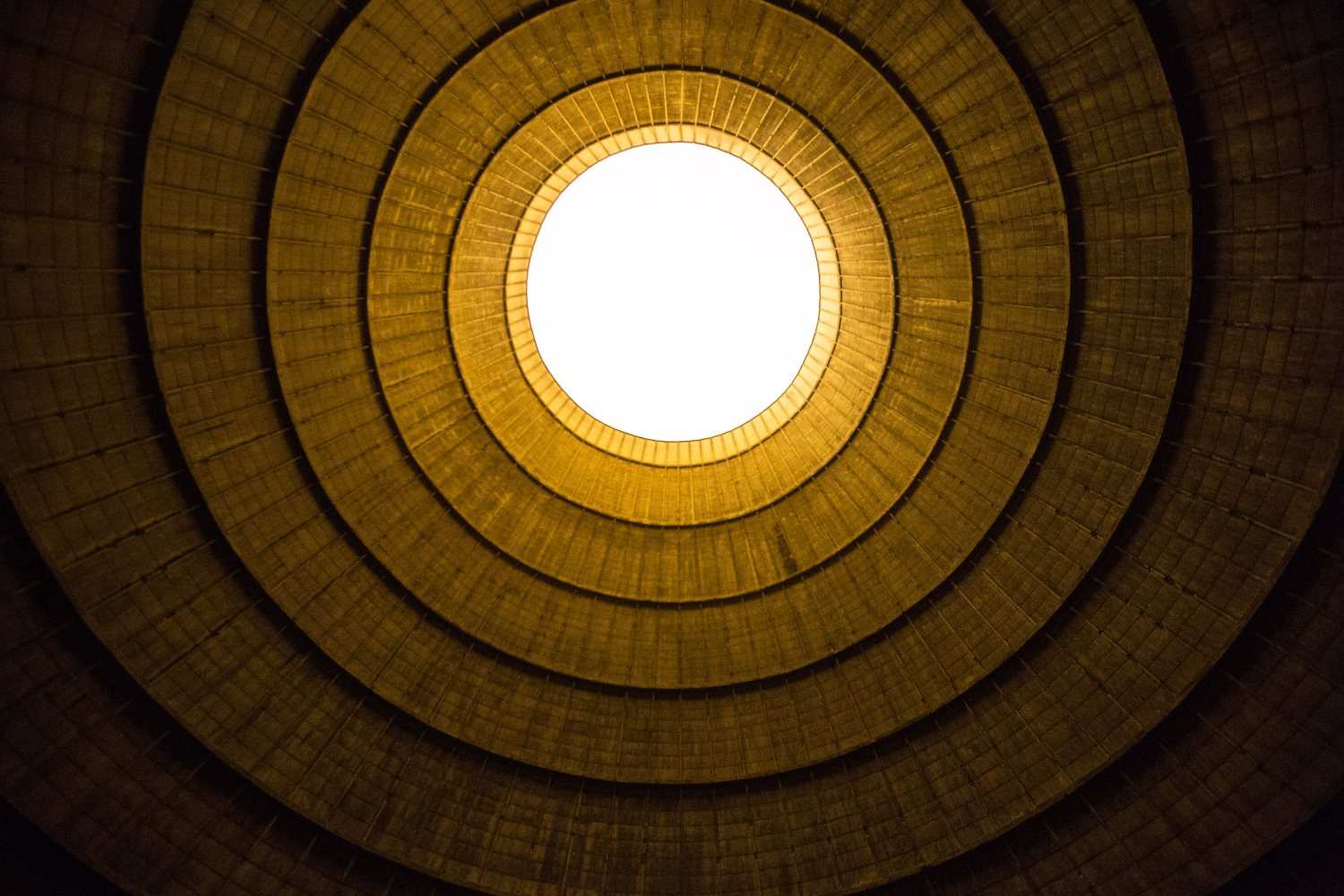
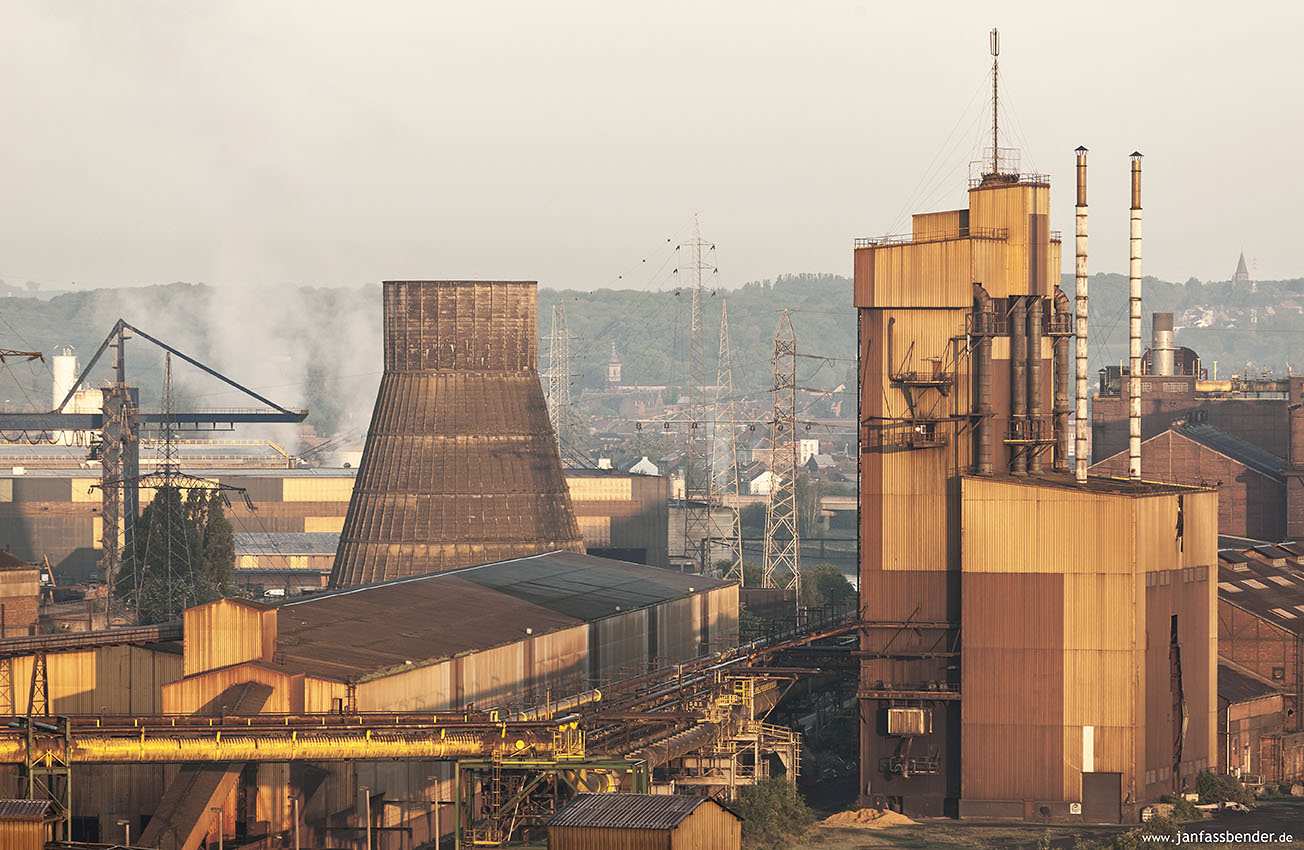
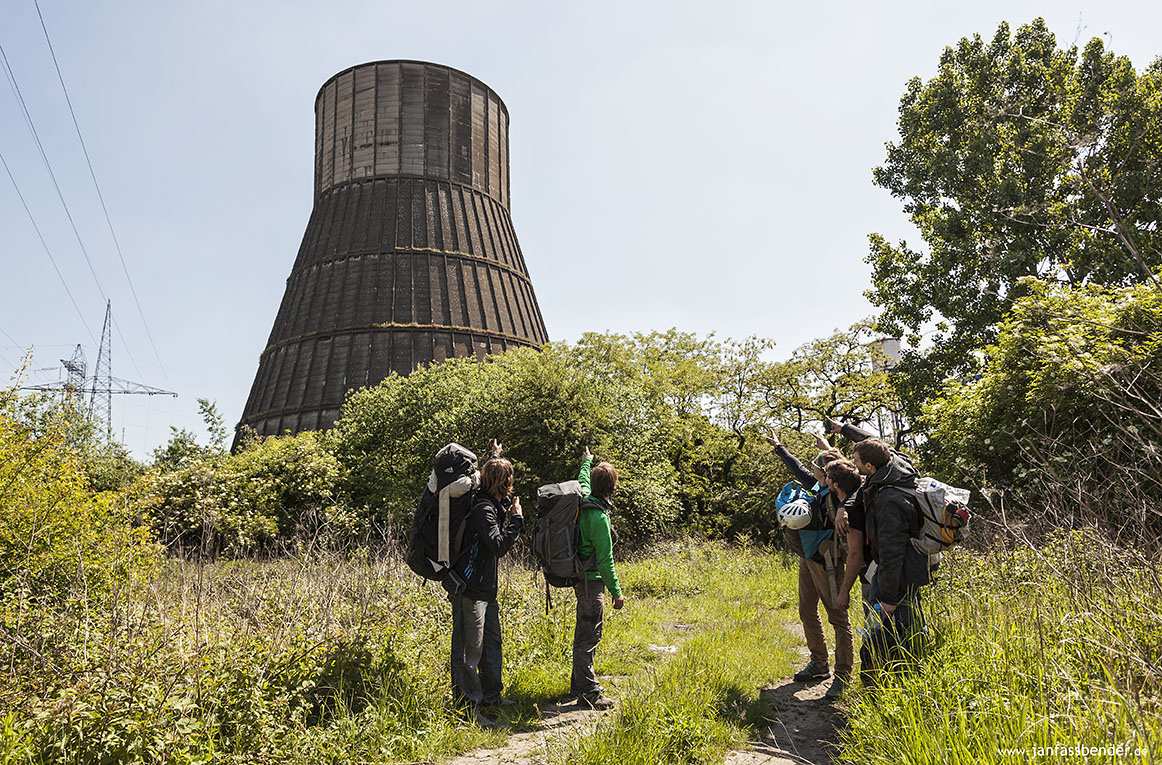
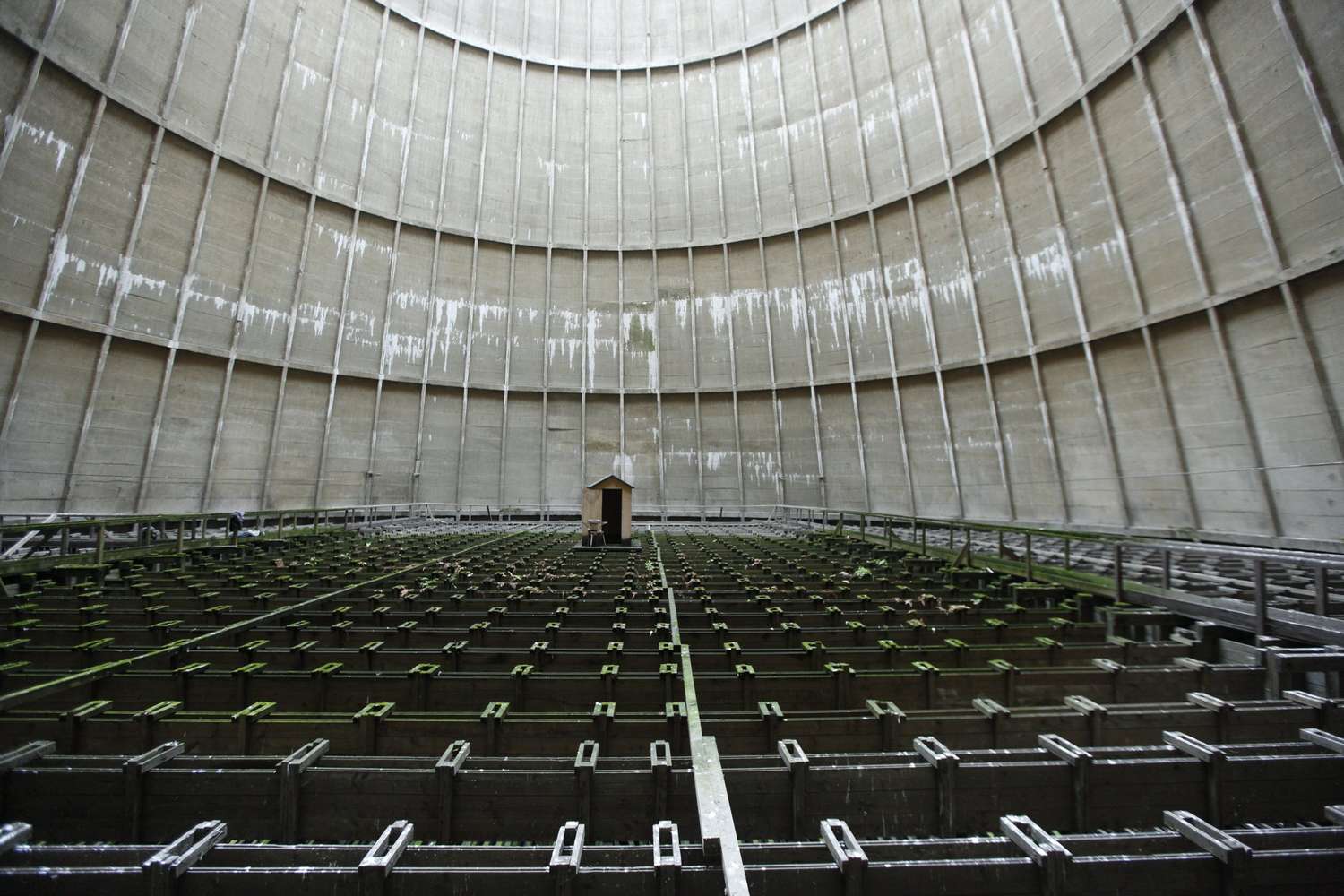
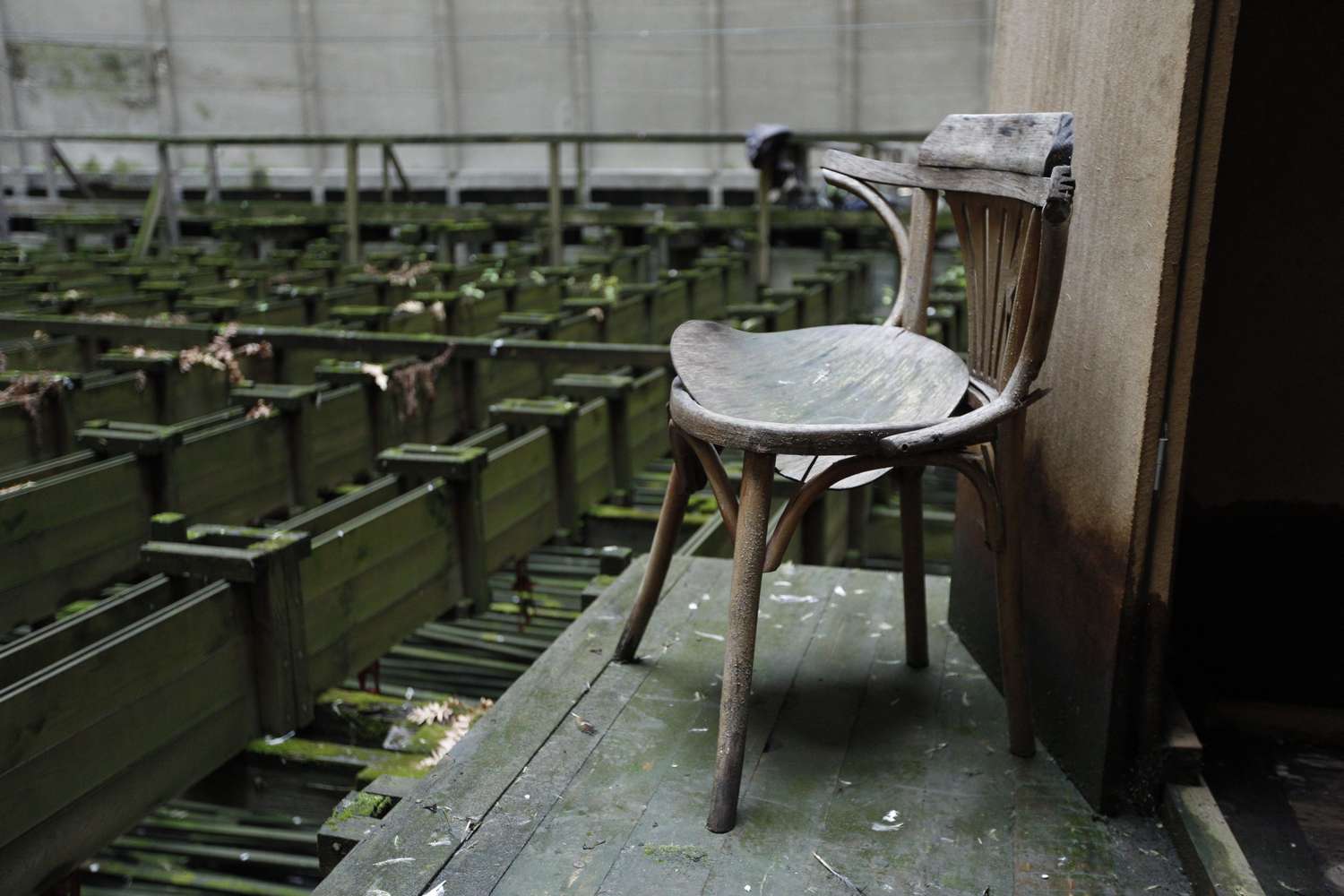
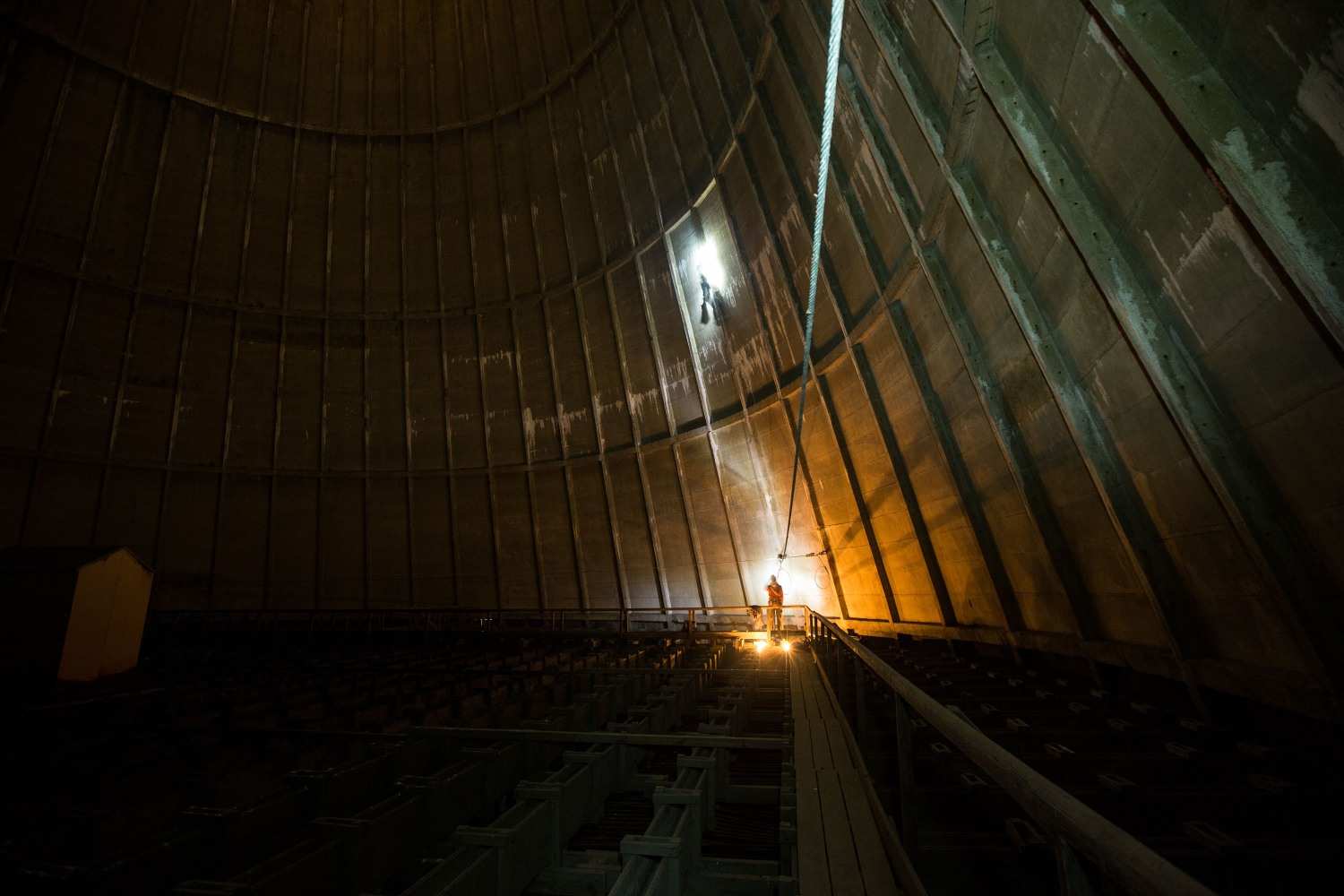
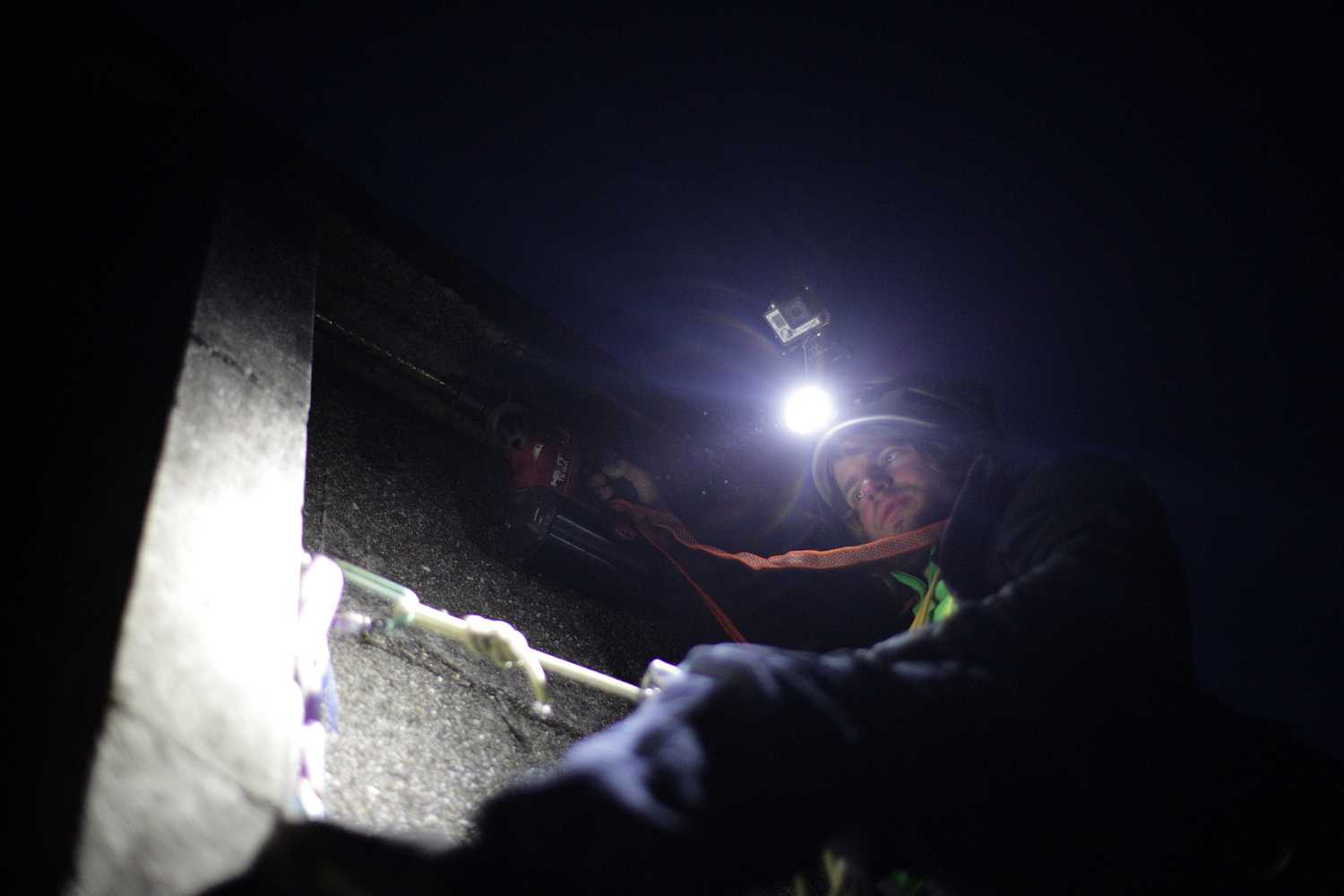
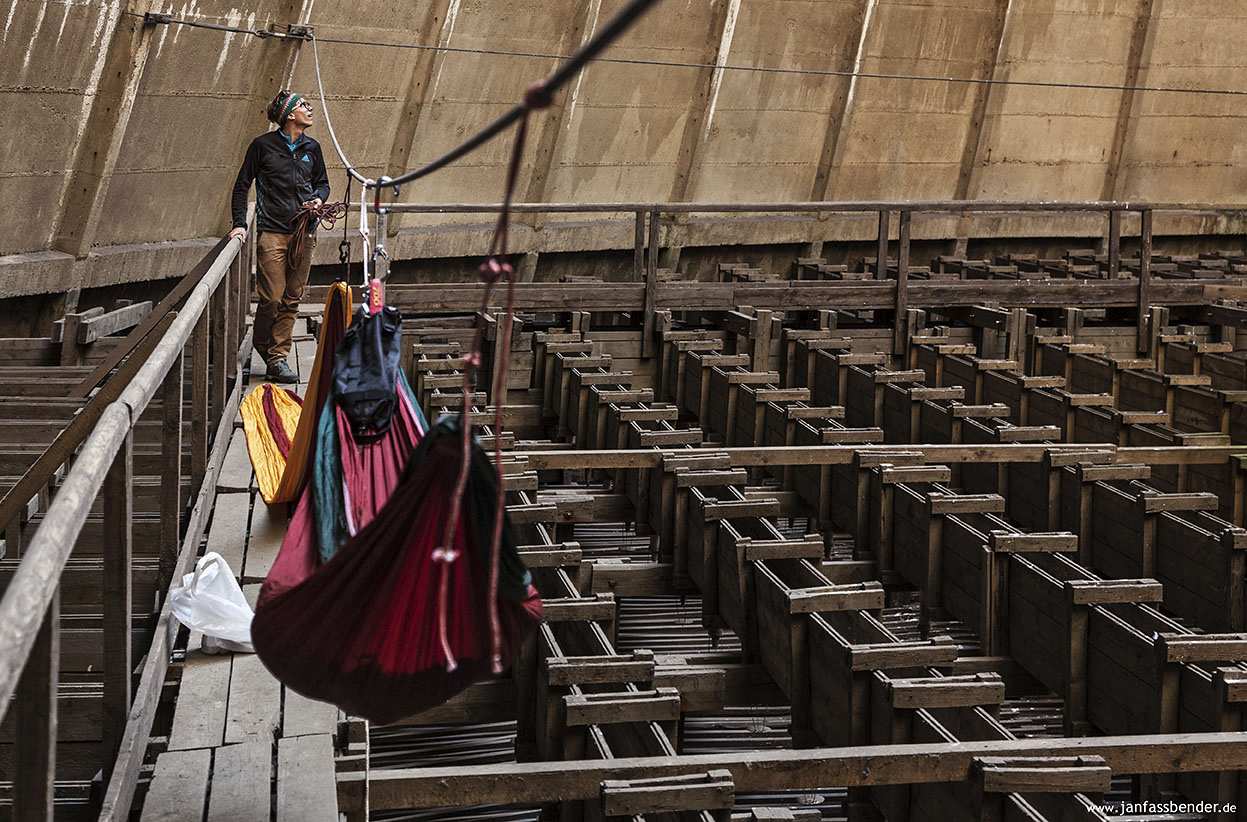
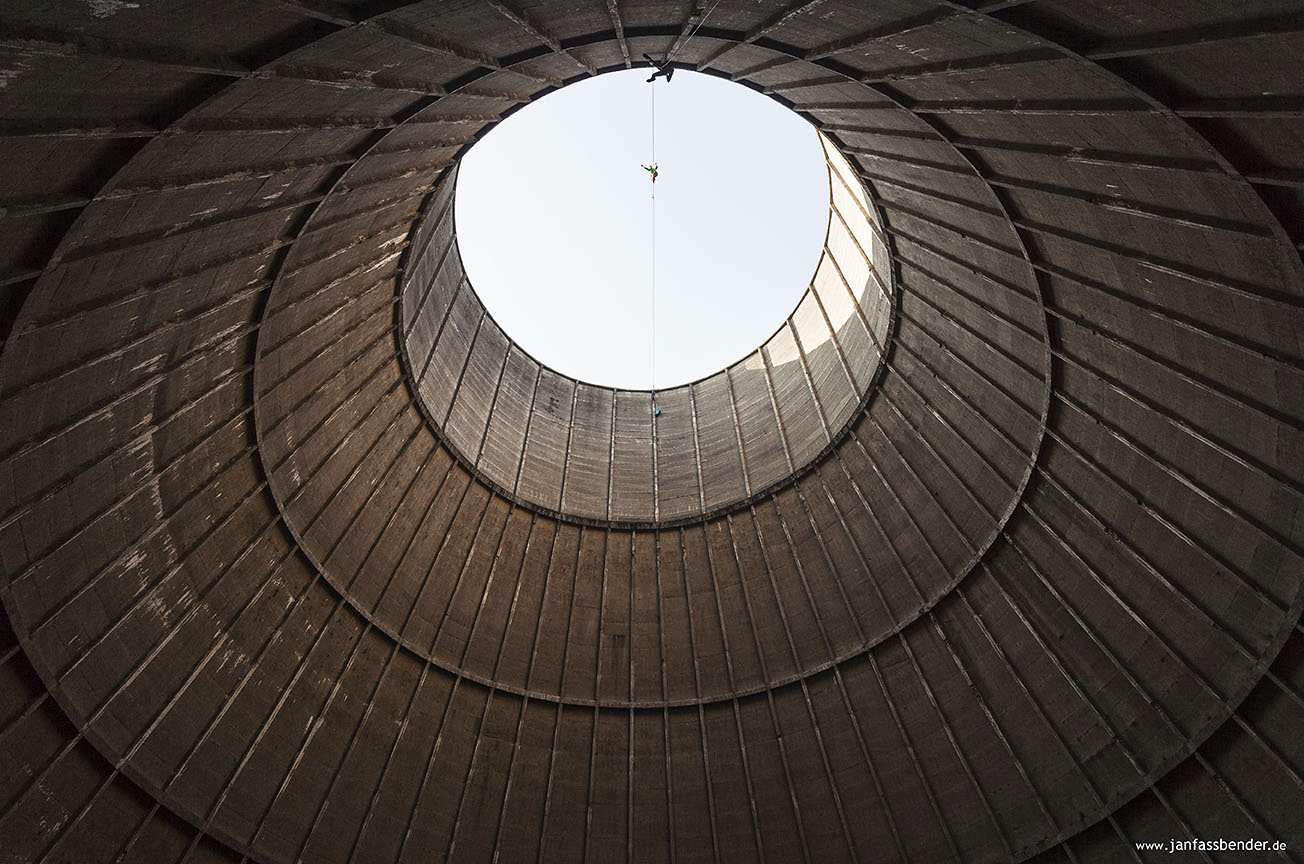
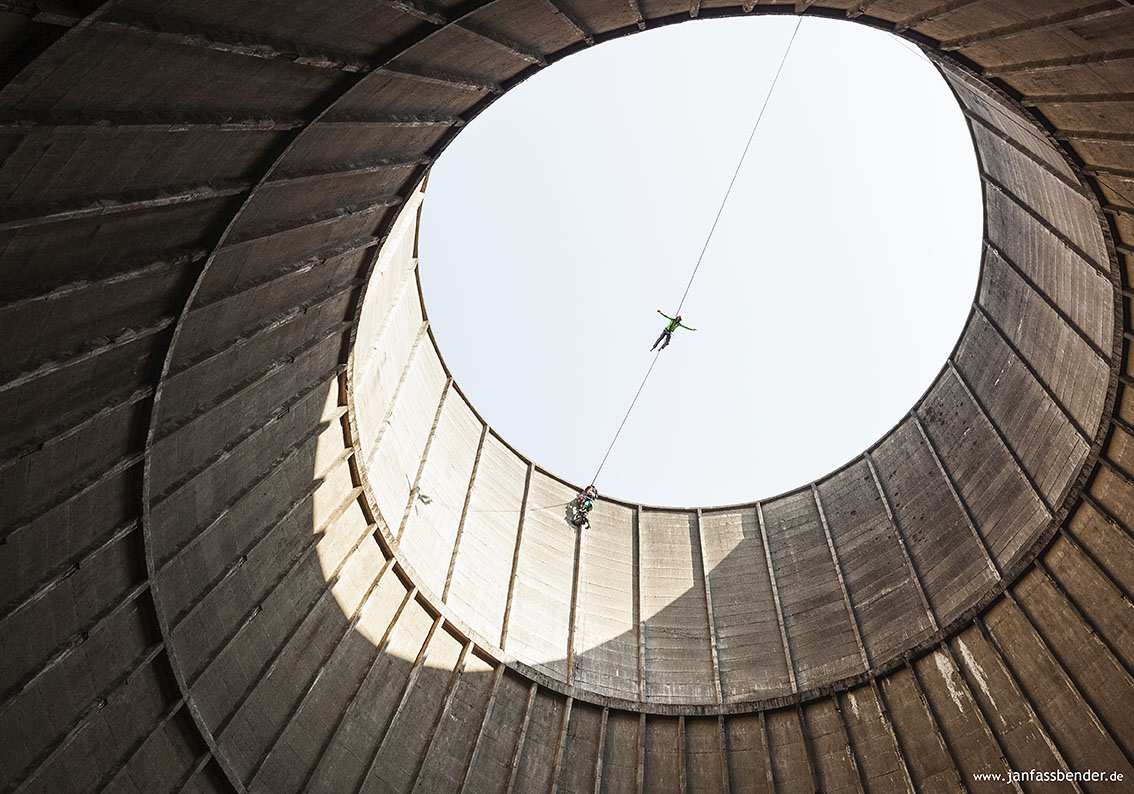
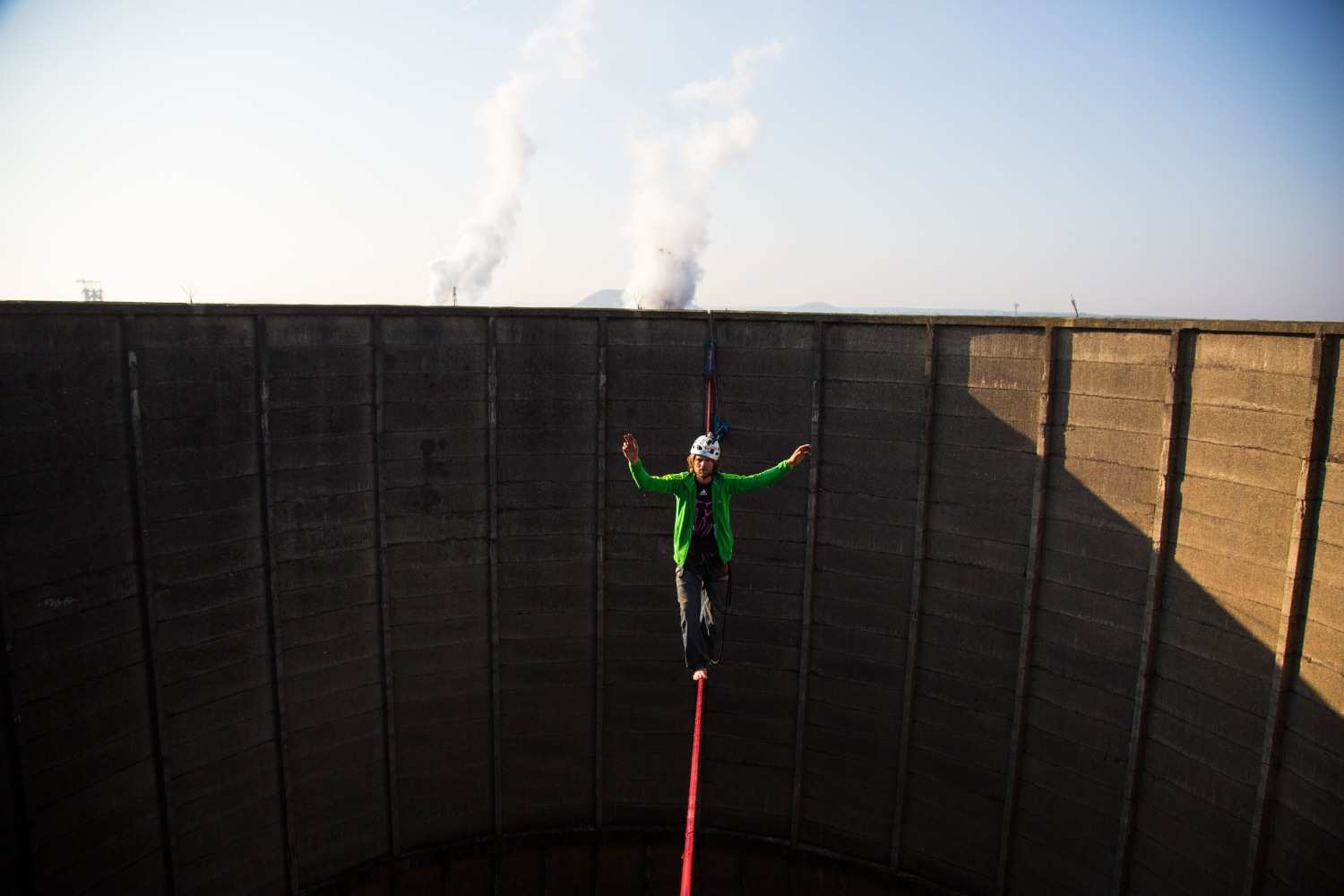
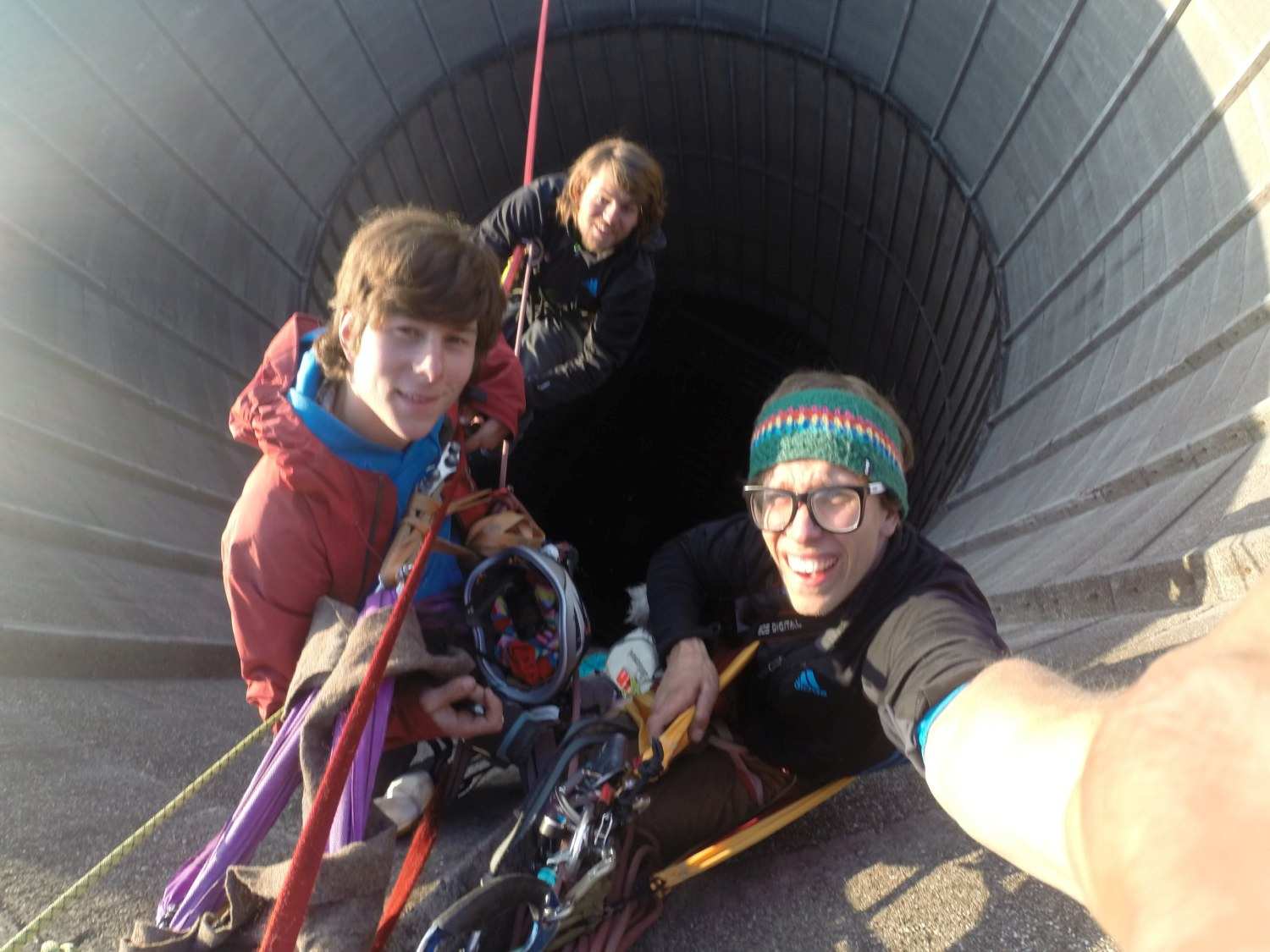
Highline in cooling tower
This is the story about the highline in the cooling tower that was published in the German outdoor magazine “RAUS“:
It is the vertical structures, the architecture towards the open sky that fascinate the highliner Johannes Olszewski. The rigging of an urban highline in the middle of one of the ugliest towns of Europe becomes for him and his team a question of nerves: Seven nights of sweating, dust and stress for one moment on the 2.54 centimeter wide belt webbing.
“The project cooling towers has failed. When you are reading this here, you’ll know that we planned something really freaky.”
These words - or at least similar to them – were written on the postcard that Johannes, Armin and Mirko set up into the sky with the help of their gigantic helium balloon one April evening. They are sitting on a heap of coal facing the sunset and being surrounded by the shining brick walls of a huge industrial area. Inside they can feel a tremendous amount of frustration – and dust.
“At this moment this incredibly ugly town seemed so strange and aesthetic at the same time. It now had an unique beautiful flair with all its factory buildings and cooling towers. There even was a very peaceful mood. Watching our balloon disappearing we realized we also had to move on.”
This moment on top of a heap of coal in the middle of one of the ugliest cities of Europe marks the end of a crazy idea for Johannes.
Previous to that moment the man from Munich toiled together with his friends and partners form One Inch Dreams in a 60 - meter high cooling tower for four nights to rig one of the most spectacular urban highlines ever.
During the day they sleep, like Johannes calls it, in a run-down one-star-hotel at the edge of town, where prostitutes do their job and the food is almost inedible. Every night they sneak past the guarded gate of the industrial complex and climb into the cooling tower.
“The atmosphere there was incredible. Acoustics were crazy, every sound we emitted echoed from the walls. We felt melancholic, we were on a trip of discovery. There was a wooden creaking runway and the creaking echoed back from the walls. The noise from the industrial complex could be heard from the distance. And out of the reinforced concrete of the side walls protruded the iron segments that cast strange shadows in the light of our headlamps,” remembers the 21-year-old.
The helium balloon was supposed to take them to the top of the cooling tower to install the anchor points of the highline there. However, the hauling of the 120 - kilogram heavy helium bottle and the sharp edges of the walls of the tower keep them from carrying out that daring maneuver. Instead they are climbing the wall inside the cooling tower. The first 40 meters are overhanging with about 15 degrees. Johannes glues long carpenter nails like crampons on the sides of his shoes and starts his climb at a 50-centimeter wide concrete segment, which leads up to the edge on top of the tower.
“There were holes through that concrete segment in regular distances, but they were full of dirt and rust. I tried to put a threaded bar through one of the holes, so I chiseled it free, hooked up my prusik sling and settled slowly into my harness gear to find out if it could hold my weight. The same procedure on the left side for my feet and then I chiseled free the next hole above my head. At that moment I was already covered in dust. And these were the first holes from perhaps about 300 holes that we worked on.” They kept on working hard and managed to progress about a meter per hour.
“Through intermediate belays we were secured from below with a climbing rope – technical climbing in a cooling tower, so to say,” he says and laughs.
The higher they get the more brittle the concrete wall becomes. Again and again large pieces of rock are falling to the ground. “That was very demanding psychologically, as normally a highline is rigged at a stable anchor point. But the higher we got the less stable the concrete material got. Eventually we had to to do some real climbing. At a height of 40 meters the overhang became vertical, where we had to do a vicious mantle move. It was Mirko who succeeded after some attempts: With his left hand he held on to the rusty concrete segment, swung up his feet and stood up,” describes Johannes one of the key moments.
It takes the three young men another whole night to climb the final 20 meters – totally exhausted and covered by the dust of decades. Finally the rope they need for the first anchor point is connected to the edge of the top, but their mood is low and they’ve run out of energy and motivation. The last climb of the three leads to the crisis meeting on the heap of coal. When the balloon disappears on the horizon, they embark on their trip back home.
Johannes can’t forget the project when back home. So he gets together a second team: Alex, Basti and Marinus from One Inch Dreams as well as photographer Jan come along to Belgium two months later.
This time they stay at Olivier’s apartment, the only highliner in this strange ugly town somewhere in Western Europe.
They arrive in the middle of the night, go straight to the cooling tower and find the door locked and welded. Gladly they can find another way in:
“The boiling hot water that was being cooled inside the towers in former times, was running in a complex system and then dispersed across wood which was soaked and eventually the water evaporated. So these wooden parts were very instable, however, we had to climb them to get inside the cooling tower. It took us one complete night to get ourselves and all our gear through a small opening to our destination.”
Marinus was their guinea pig and uses that old rope that had been rigged laboriously months before. It’s safe. At dawn they pull up their haul bag full of material and fall asleep.
The biggest challenge for the team is still ahead, as they’ve reached only one point of the top of the tower. Rigging the second anchor point opposite the first one seems to be an insurmountable task. The edge of the rim is only about 40 centimeters wide. Alex offered to take over and do this extremely difficult part of the project.
“The idea was for Alex to crawl at a height of 60 meters to the other side of the tower to rig the second anchor point,” remembers Johannes. “You could only do this without any safety harness or rope connected to us. If you manage to be focused a hundred percent, you can do it and walk or crawl the distance without falling down. However, the danger was in the subconscious. It was incredibly exciting. At a distance of 10 meters there were several nasty three-dimensional lightening rods, one and a half meters tall and razor sharp. The moment Alex was crawling towards the first of these lightening rods he panicked. Nevertheless, he kept on crawling, talking to himself, shouting and screaming he tried to step over it. But in vain, he had to stop. I myself was in favor of calling it a day and cancel the project,”
says Johannes, who is sitting only a few meters below Alex in his climbing harness watching the whole action together with Basti.
“We felt so helpless up there. Yet, Basti started talking to Alex telling him what to do and motivating him to try again. Alex calmed down slowly but gradually. He had been sitting in front of this first lightening rod for an hour at a height of 60 meters when he bend some of the wires over and managed to climb across the remaining wires of the lightening rod. After Alex had crossed this first obstacle, we noticed a change in him: he recovered and got back his self-confidence. Eventually he disappeared in the darkness and we could only hear his mumbling, coursing and cheering. This was one of the craziest thing I’ve ever experienced in my whole life although it wasn’t even me crawling along the rim of the tower,” says Johannes.
I took Alex two and a half hours to crawl to the opposite side of the tower. As there was no other option, he had to pee his pants twice unable to open his fly properly.
It is 4:30 a.m., it is getting light outside. Alex lowers a thin cord on the inside, uses it to pull up a static rope and throws one end of it down on the outside wall of the cooling tower. Marinus fixes the rope on a tree, Alex – secured with the single strand of rope – thereon positioned himself on the inner side. At a length of 60m even a static rope stretches quite a lot, which is another challenge for Alex.
Once he had sat in his harness below the tower rim, the second anchor point could be set up and so the line finally be rigged. The rock is spongy, so the guys chose a polyamide tubular webbing. It stretches a lot, so the shock loads on the anchors are smaller than they would be with a polyester slackline. Parallel to the slackline they install a separately anchored safety rope, which additionally would secure the highliner at a fall.
When the setup is finished, it is already bright morning. At this point, Alex has been sitting in his harness for 16 hours, Johannes twelve. Again and again he has dozed off in his hammock dangling at a height of 55m. At dawn Alex scoots over to the other two guys using a slackline pulley.
"It was eight a.m. on the seventh day when we had finished rigging the highline at the cooling tower.
As I was the one to have the idea, I had the privilege to walk it first. I had to pull myself together. Actually, I didn't fancy this highline any more, as I was totally exhausted, wanted to go down and let it all be. But then I thought of the six days of work. Completely frozen and tired I settled on the highline and took off my shoes. The slackline had a huge sag and was terrible to walk. Especially for me, I was really on the ropes. But suddenly everything matched. Basti put on some music. And once I had overcome myself, it was a very enchanting situation. At this moment I felt the gist of our work. Then the sun appeared, shone on us inside the tower, it got warm. Alex sat with enormous dark circles around the eyes in the hammock. And suddenly it became clear to me why we were doing this. We three were up here where nobody else had ever been before. And at that functional place nobody has done a rudimentary similar thing like we did. It is a place, which fulfills absolute practicality to cool down water in the apparatus of a coal burning power plant. Every object there has its position, everything its norm, every worker his shift work. Dancing feelings like ours don't usually exist up there. Sitting together at the line and listening to music is unknown at this spot. For me, however, walking across this line is an act of art. Particularly when we connect a purposeful locality with something which isn't functional but done voluntarily, which comes from our motivation and deep from our heart. The feeling of connecting these aspects in one of the ugliest cities of Europe, in which we rigged our highline, is beyond words.”
Johannes starts to walk the line. But the nights full of work show their effects. He needs about 20 tries for the 27m across the crater rim und is just happy and relieved.
Alex is next, it costs him also quite an effort to stand up. However, in the first try he walks forth and back. Basti walks the highline as well, while Johannes is rappelling back.
When everything is over, Alex and Marinus derig.
"At this moment a heavy weight fell from us" Johannes remembers. "That was the most beautiful moment. We sat in this black hole down there, soaked with sweat, dirty all over and stank. But we were happy."
They fall asleep, wake up in the early evening and instead of going back into the cooling tower once again, they drive home.
And somewhere in this ugly city someone finds a strange message on a gigantic helium balloon.
Selection Media Coverage
Chocoslack | The One Inch Dreams urban tower project
Johannes Olszweski talks about...
...how he started highling
I was 13 when I stood on a highline for the very first time and I had already been climbing at the time. In 2008, my attitude towards climbing began to change. I started approaching bigger walls and got into highlining. In Summer 2008, I was able to walk my first slackline rigged over a canyon. One of my most beautiful highlines was the one I set up together with Bernhard Witz on the Eiger North wall, 1000 meters high.
...the rocks of Meteora in Greece
My so far biggest chapter. Inspired by a James Bond movie, we did some sick stuff in this place that is Unesco world cultural heritage. A fantastic journey of first ascends on very special lines. For me, this was where my love for the mountains had its kick-off. Turtles, that were dropped there by birds, live on these narrow, 300 meters high rock pinnacles. A unique place! Highline history!
…world records
They do not mean anything to me anymore. Back then, I was young and so was our sport, but my time is over. I do not keep pace with all those records that people walk these days, as things that have not been done before are way more appealing to me. Unique landscapes instead of length or height of the slackline.
...the urban environment
You can find uniqueness in a highline spot either in the nature, or in an urban environment. Quite often, it is easier to find it in the latter. You will experience a different relationship to your surrounding and sometimes have spectators watching you. The horizontal and vertical shapes, the straightforwardness of the architecture, the perfection created by mankind – all these things fascinate me. I just love clear lines, which extend perfectly towards the sky. And not because of the numbers or facts about the place, but rather because we see a playground in it. On the tower of a refinery, you can usually show anything but creativity. But we do it.
...fears
They are an essential part of the sport that I am doing. Many people are haunted by fears. Me personally maybe a little less than other members of our team. Fear rather reminds me, that I have to cope with myself. I have to cross a border in order to reach a state higher than fear. Nevertheless, I also see fear as a warning signal. It is easy to overestimate fear. And you need to be aware that fear often means that there is actual danger. When you learn to deal with that, you reach a higher level and you learn something new.
...sponsors
Elephant Slacklines is our main sponsor and gives us financial support for highline projects. Whenever they come up with a new product, we test it and they ask us for our opinion. Thus, share in the development of products. Further, we support them at their events, whenever there is any need for a professional athlete. Just like in the near future, when Alex is going to walk an amazing line over the sea at Helgoland.
...goals
I want to rig a highline over a volcano. I want to set up highlines in the big East Asian cities, on the highest skyscrapers in the world. I want to do things that happen outdoors, free and independent, for my entire life. And I want to win an oscar.


